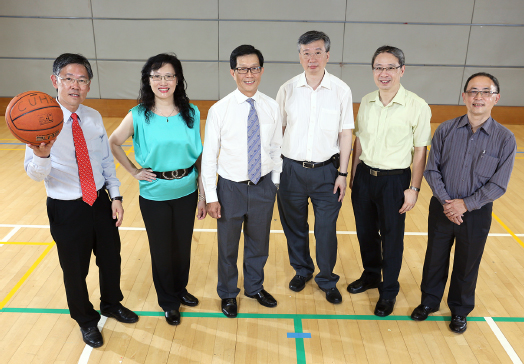
CUHK's Green Team
1. What drives the University's policy on sustainability?
(Prof. P.C. Ching) CUHK is committed to excellence in teaching, research, knowledge transfer and community service. Our campus's diversity makes it an effective laboratory for applying different components in sustainability. Under the leadership of the Vice-Chancellor, Prof. Joseph J.Y. Sung, we are dedicated to building a sustainable campus, and through it, demonstrate to the public what should be done in a sustainable community.
2. What is the University's progress in achieving its carbon reduction targets?
(Prof. Fung Tung) According to the Campus Master Plan, we aim at reducing greenhouse gas emission per capita by 20% and energy consumption per capita by 25% by 2025, using 2005 as the base year. From 2005 to 2012, we reduced energy consumption per capita by 18%. To achieve the ultimate goal, we have a medium-term target to lower energy consumption by 8% in five years from 2012. Our energy conservation plan engages all University units to appoint energy wardens and adopt conservation measures to optimize energy consumption and cultivate more sustainable modes of living and working.
3. What achievements have CUHK made in sustainability that you are most proud of?
(Prof. Chu Lee-man) Our all-positioned effort is what I like most. We have paid extra attention to energy saving, water conservation, waste management, building a pedestrian-friendly campus, green transportation, tree and ecology preservation, and slope protection on campus. Our Green Office (GO!) Programme also solicits the participation of both staff and students. The involvement of everyone from higher administration to staff from various offices and environment committees is also exceptional. In all that we do, we not only adopt the best practicable know-how, but also strive to change behaviour which is conceptually more important for the success of environmental protection.
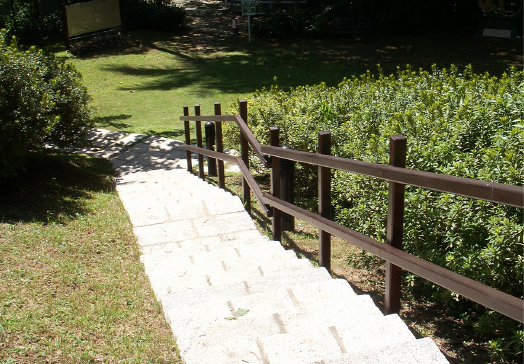
4. An overview of some recent accomplishments of your office?
(Ms. Vivian Ho) Since our inception in July 2011, we have reviewed and formulated various sustainability-related polices and guidelines, set medium-term targets whose progress we monitor regularly. Besides the Green Office Programme (GO!) and the CU Green Buddies Scheme which have received overwhelming response and made profound impact both on and off campus, we spearheaded the 2013 Energy Conservation Plan and Incentive Scheme as well as the Love Food Hate Waste @ CUHK and 'Bring Your Own' Campaigns. We really pride ourselves on our stakeholder engagement endeavours.
5. What are the major contributions of your office to campus planning and infrastructural projects?
(Mr. Fung Siu-man) We provide solid support to the University's management and community, addressing the aspirations and changing needs of education and enhancing the campus facilities for sustainable development. We secure resources for the University's physical development and sustainability works by identifying capital projects and improvements works, and preparing detailed submissions for the bidding of Government funding. We work closely with consultants, users, approving authorities and other campus units to achieve sustainability in design, fulfil academic development requirements, and preserve the cultural heritage and green environment of the University. We also take part in various university committees as secretary and/or member to provide input on campus planning, building design and sustainability matters.
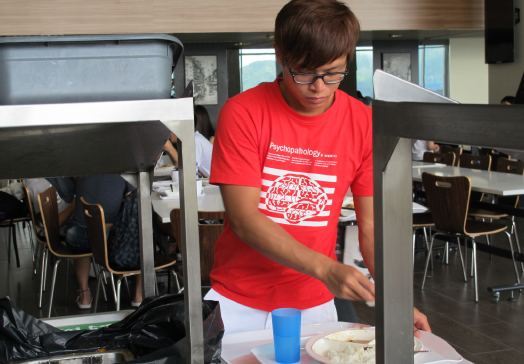
6. What new energy conservation and waste reduction initiatives are in the pipeline?
(Mr. Benny Tam) By the second half of 2014, the number of roadside standalone litter bins will be greatly reduced. In outdoor ground areas, litter bins will only be provided side by side recycling bins. We also hope to make source separation and collection of paper waste mandatory in all offices, and will continue to install more food waste compost equipment for pilot operation at canteens. In terms of energy conservation, the incentive scheme ─ which aims at achieving an 8% energy savings in 23 selected buildings in phase one ─ will be a major target in the coming four years. There will also be a retrofit for all exterior illumination involving 1,700 sets of lighting. Reinforcement of free air cooling mode will also be a major goal for all communal circulation spaces in the coming few years.
7. What is the greatest challenge in the University's sustainability efforts?
(Prof. Chu Lee-man) The size and setting of our campus are both an asset and a burden. To provide the best learning and working environment, we need greater provisions to manage and maintain the physical environment. This can be illustrated by the demand of campus transportation and landscaping works. The huge number of canteens we have and the construction of low-density buildings also result in seemingly 'less efficient' food waste recycling and property maintenance respectively, which are not conducive to sustainable development. We are certainly enjoying the best campus in Hong Kong, but this likely makes our job harder regarding the funding and labour needed. These are the two sides of a coin.
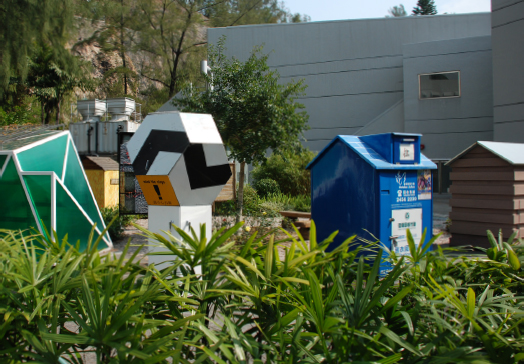
(Ms. Vivian Ho) The University's priority foci in the short to medium term will continue to be energy conservation and waste reduction. Besides getting resources to upgrade the hardware which are certainly important, the greatest challenges remain with people - how to sustain collaboration among various operating units in getting the necessary data to support policy and strategy formulation as well as in delineating workable action plans and seeing through their implementation; and how to sustain the cultural and behavioural changes we have instilled on campus as people come and go. We have been doing very well in these areas, and we have to keep the momentum going.
(Mr. S.M. Fung) The CUHK campus provides good references for campus planning and development. On the other hand, our projects face challenges, such as how to overcome impact on existing trees or landscape, and how to coordinate with stakeholders and authorities over the felling, preservation and re-provision of affected trees. The hilly topography renders the construction of new buildings more costly and time consuming, not to mention pose constraints on the development of roads or linkages for pedestrian and vehicular traffic. In the process of construction, extensive studies have to be conducted to preserve campus wild life and ecology as well.
8. CUHK enjoys the greenest campus in Hong Kong. Does that make your job easier or harder?
(Prof. P.C. Ching & Prof. Fung Tung) Endowed with a large campus with an area of 137 hectares and an altitude variation of 5 m to 150 m, we do face a lot of challenges. We need to maintain 300 slopes to minimize the occurrence of landslide. Some of our buildings do need to be constructed on slopes which drain additional resource in site formation. Our fresh air, rich biodiversity and diverse landscape, however, provide priceless stimuli for us to work on these challenges. Most importantly, we have to learn how to live with nature in harmony.
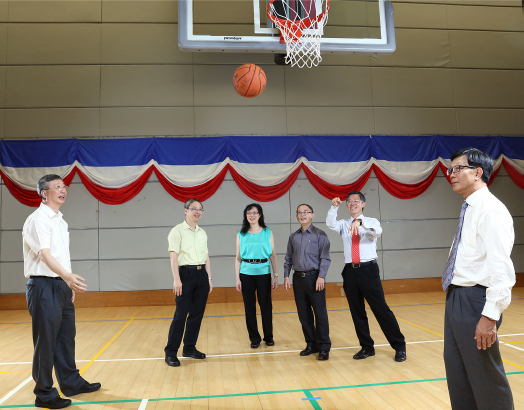
(Mr. Benny Tam) A large campus means implementation of any green measure requires more effort, but it also gives extended scope for carbon reduction. For example, our fauna ecology preservation is not limited to our resident birds, but also butterflies, dragonflies and aquatic animals. Many of our 18,000 mature trees require annual health inspection and routine treatment as a basic preservation measure; some even need regular intensive care for public safety reasons. It's not easy to recruit experienced arborists and plant pathologists when Hong Kong is so far behind in tree management skills compared to places like Singapore and Japan. We have over 30 food and beverage outlets which enjoy operational autonomy. Implementation of green measures takes time. Our steep and narrow roads make our campus a good platform for pilot testing green transport for Hong Kong. We are also the only campus with our own gasoline station which allows us to conduct trials on biodiesel. We have ample space for developing waste recycling facilities. Our natural stream and man-made lake provide important conservation infrastructure for grey water collection, treatment and recovery for use.
Members of the CUHK Green Team
- Prof. P.C. Ching, Vice-President and Chairman of the Committee on Campus Sustainability
- Prof. Fung Tung, Associate Vice-President and Associate Director of the Institute of Environment, Energy and Sustainability
- Prof. Chu Lee-man, Chairman of the Committee on Campus Environment
- Ms. Vivian Ho, Director of Campus Planning and Sustainability
- Mr. Fung Siu-man, Director of Campus Development
- Mr. Benny Tam, Director of Estates Management


